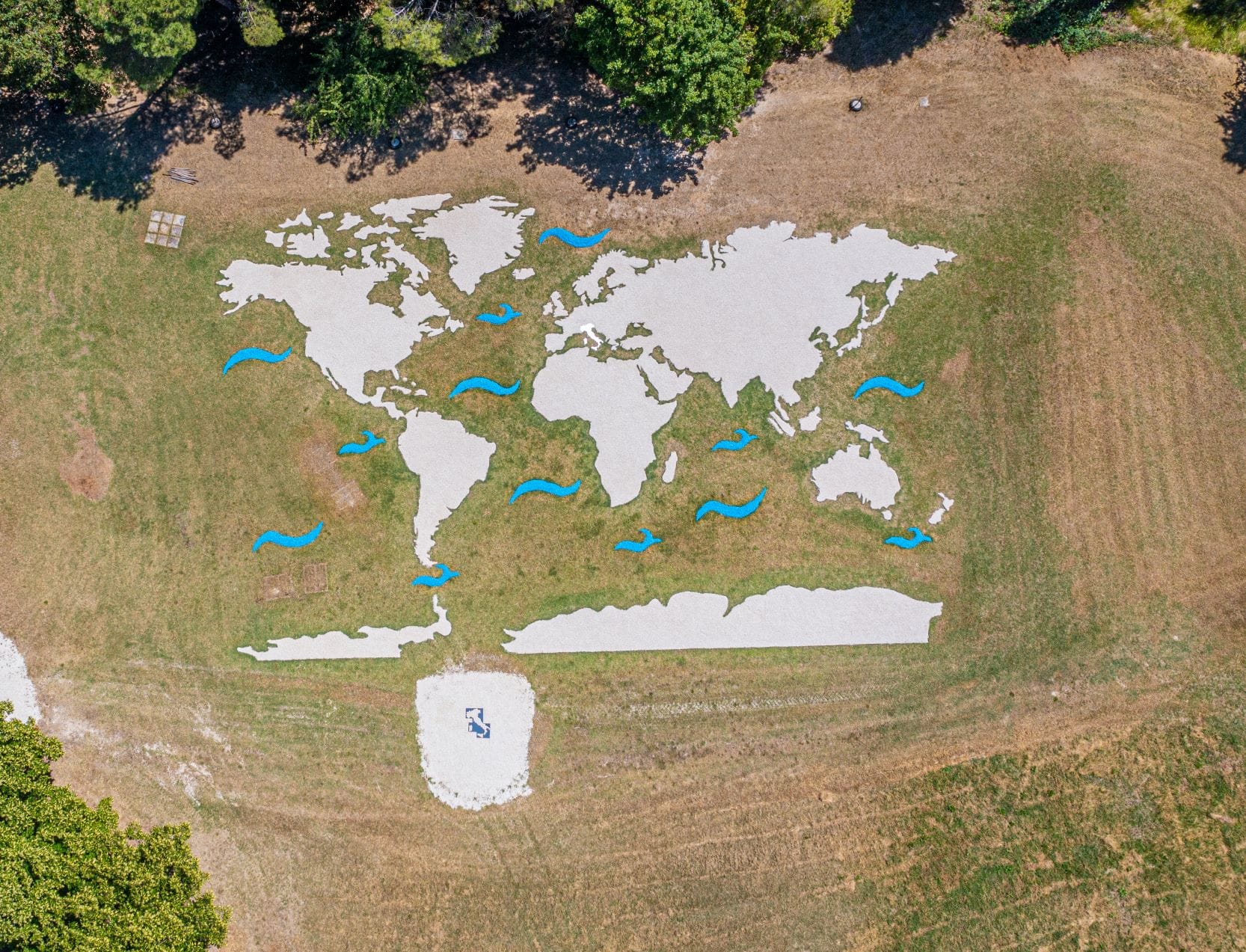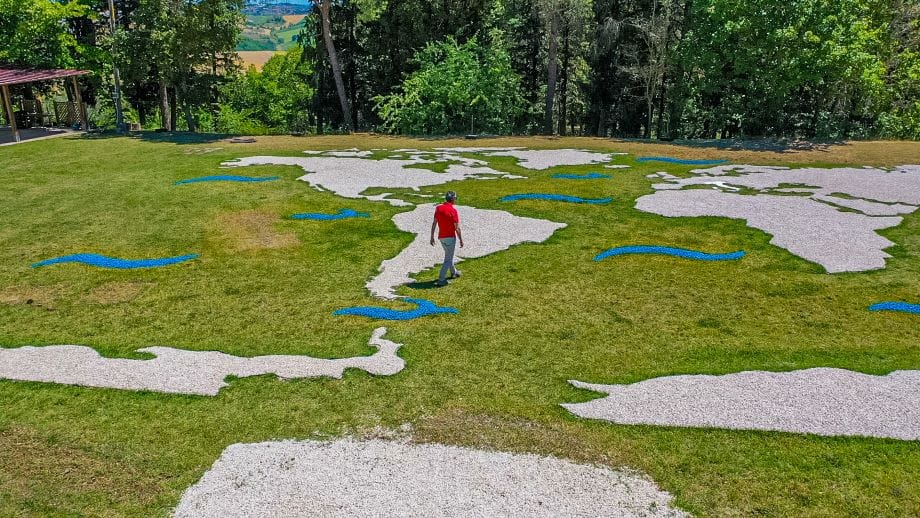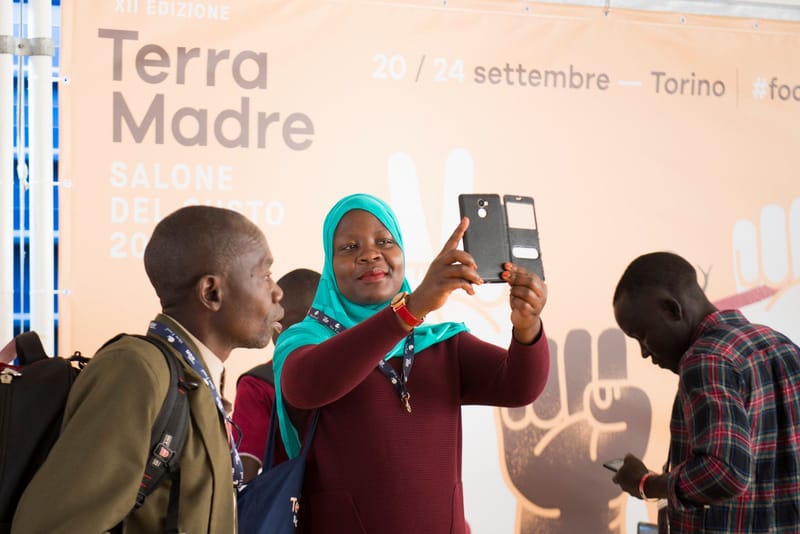In Corinaldo, the world's largest planisphere: it is 627 square meters in size
Inaugurated June 15 in the province of Ancona, it anticipates the widespread Festival of Geosciences (Oct. 6-13)

The world's largest planisphere is located in Corinaldo, in the province of Ancona, and was unveiled June 15. It is the brainchild of paleontologist Rodolfo Coccioni, creator with geologist Silvio Seno of Planet Earth Week."I proposed it in 2023, on the occasion of our event ," Coccioni explains, " and there was immediately a lot of enthusiasm. We built it on the grassy ground of the municipal park 'Selva di Boccalupo' and used mainly compatible materials such as gravel, white and pinkish for the continents and light blue for ocean waves and major inland basins, wood and iron. A drone and modern tracking technology helped us. The goal was to make something big to remind us that this is the only planet we have and to discuss current issues affecting it."
The unveiling of the planisphere anticipates the 12th Planet Earth Week, National Geosciences Science Festival, which will be held Oct. 6-13, 2024, and whose organization is entering into full swing in these weeks. Articulated in a series of GeoEvents spread throughout the country, in its eleven previous editions the event presented more than 1,900 meetings and appointments. Treks to discover the mountains and their rocks or to descend into caves and be seduced by stories millions of years long; visits to archaeological sites, which tell the story of our past, or to naturalistic oases, museums and even locations normally closed to the public; nighttime stargazing and landscape observation, to regain the knowledge of the night and the knowledge of the firmament, whose visibility is lost in contemporary metropolises; all to explain and understand the delicate balance on which the good health of our planet is based. Plus conferences, school activities, meetings and conversations that popularize the work of geologists, volcanologists, researchers. Activities are organized by universities, schools, local and research institutions, scientific and cultural associations, parks, museums and even private citizens who are passionate about geosciences and the environment. And it is precisely the variety of organizing entities that the event aggregates that best expresses the Festival's ability to address a diverse audience. Moving between high and low, with many pop events that presuppose a diversity of languages and approaches, Planet Earth Week involves students, enthusiasts, families, the curious. And it presents to the public the grandiose geological and natural heritage that Italy must take care of, including through the awareness of its inhabitants.

"A more informed society is a society that is more involved and able to mobilize in the face of environmental emergencies. That is why we also take Geosciences out of the universities and make them dialogue with history, archaeology, theater, music and even food and wine. Our formula is rigorous and scientific popularization, accompanied by fun, light-heartedness and accessibility. We propose an opportunity for cultural and environmental tourism through GeoEvents, which helps people understand how indispensable the Geosciences are for the defense of the planet's balance and how responsible they are for the scenic beauty that surrounds us," comments Silvio Seno.
Geology, after all, analyzes phenomena such as glacier melt and their consequences; studies hydro-geological instability andwarns, often unheeded, of the dangers involved; and determines, again often unheeded, whether or not buildings can be constructed on a given terrain by examining its characteristics. Volcanologists monitor bradyseisms in the Phlegraean Fields, trying to predict the severity of ongoing phenomena and collaborating in the design of evacuation plans. Volcanologists again, work alongside archaeologists to understand what happened in that October of 79 A.D., in Pompeii: their studies of the stone layers that covered the Roman city reconstruct the dramatic sequence of events caused by the eruption of Vesuvius. The study of rocks and fossils now allows us to know that the Po Valley was a sea and that Sardinia and Corsica were part of Spain and France before they broke away and began to rotate together toward the center of the Western Mediterranean.
(info www.settimanaterra.org)






